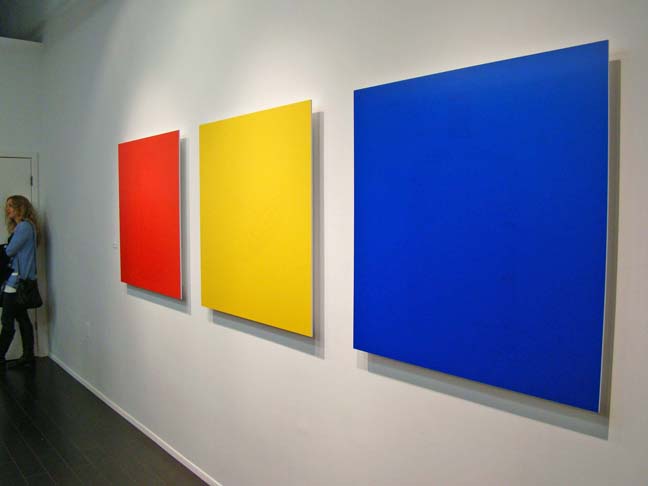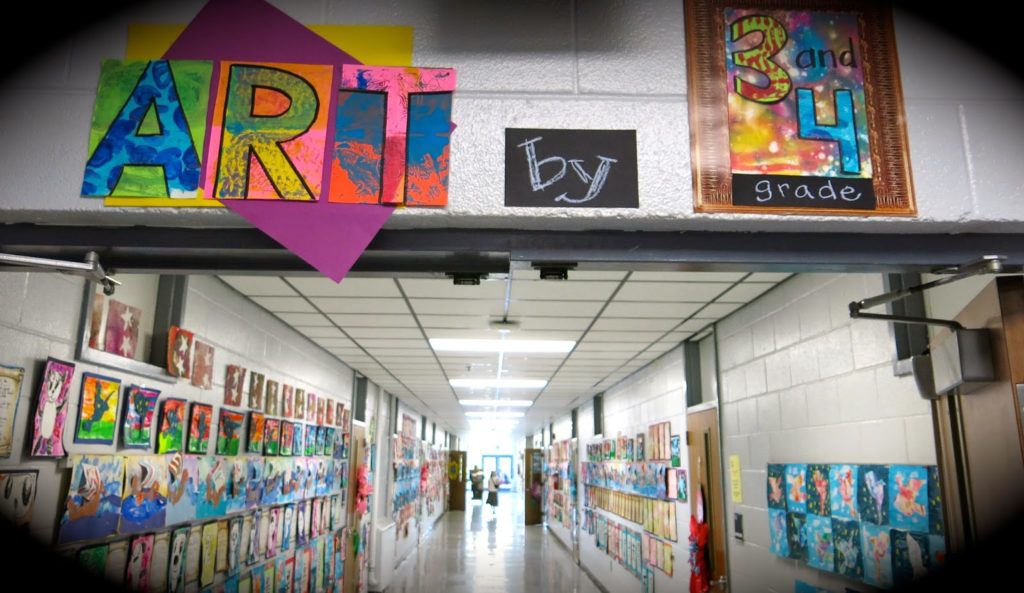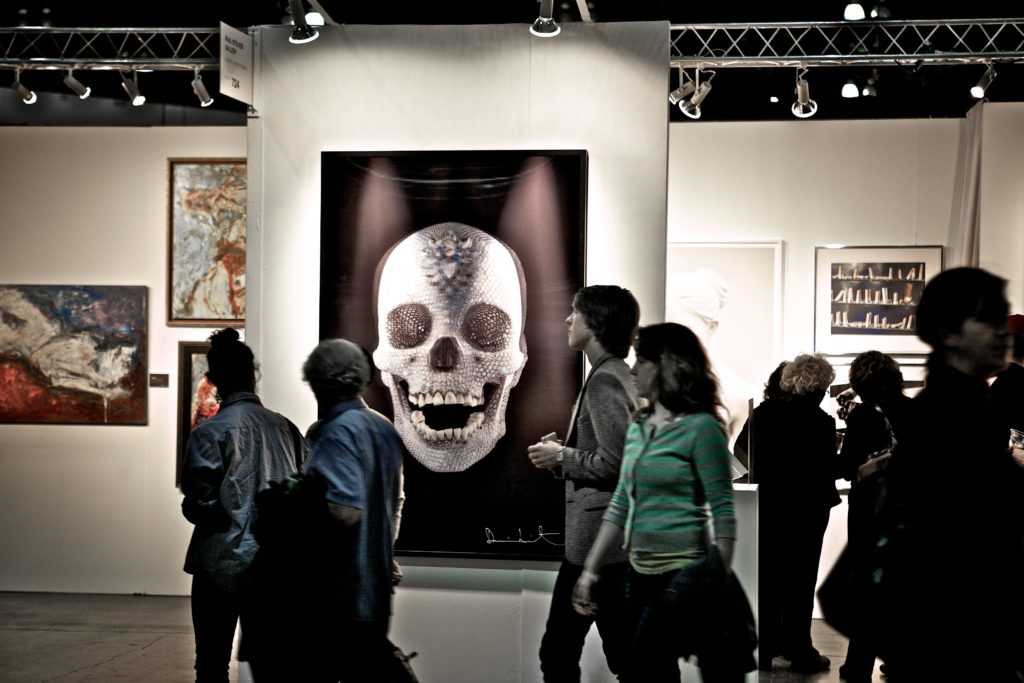 Do you ever wonder how a gallery decides to give a new artist a first show? If you’re like many artists, you probably think it’s all about the art. You waltz your oeuvre through a gallery’s doors, the owner swoons; game over. Right? No, not really. According to gallery owners, that’s not at all the way it works. Sure, gallery owners have to be impressed with your work and like it enough to want to show it, but according to them, that’s only a start; there’s far more to it than that. Plenty of other puzzle pieces have to fall into place in order to seal the deal (or fall out of place in order to kill it).
Do you ever wonder how a gallery decides to give a new artist a first show? If you’re like many artists, you probably think it’s all about the art. You waltz your oeuvre through a gallery’s doors, the owner swoons; game over. Right? No, not really. According to gallery owners, that’s not at all the way it works. Sure, gallery owners have to be impressed with your work and like it enough to want to show it, but according to them, that’s only a start; there’s far more to it than that. Plenty of other puzzle pieces have to fall into place in order to seal the deal (or fall out of place in order to kill it).
Getting a first show with a gallery is much more than an impersonal arrangement between two independent entities where you supply the art, they supply the wall space, and then you go on about your business while they do all the rest. You and the gallery owner are about to enter into a business relationship, a partnership of sorts, and hopefully one that will have seriously positive consequences over time. Whether you’re aware of it or not, galleries always look to the future, at least the established ones do, the ideal outcome for them being mutually beneficial and constantly evolving long-term relationships with the artists whose art they choose to exhibit. So what exactly do gallery owners look for in addition to your art when deciding whether or not to give you that all-important first show (and hopefully many more to come)?
Let’s start with your life and career as an artist, not what you’re up to today, but rather what the prognosis might be down the road. Gallery owners not only have to like your art now, but they will also do their best to assess your potential for growth and development into the future. They’re aware that the payoff is not always immediate, and that if they’re going to invest time, money, publicity and wall space in your art, they want to at least see some promise for an evolving, engaging and ongoing narrative. In other words, they look for signs that you’re serious about your art, have some sense of a game plan, guiding principle or philosophy, and are committed to being an artist and showing your art for many years to come. There’s hardly anything galleries hate more than to back artists who suddenly decide to do something else with their lives and poof off into the ether forever. Vanishing artists and one-hit wonders do not make a gallery look good.
As for your work, dealers consistently describe their ideal artists with words like ambitious, original, risk-taking, bold, inspiring, and so on. They want to hear your whole story, not just today’s headlines, but where your journey is taking you, and what drives, motivates and inspires your creative process. Do you have more than one idea? Do you have a vision? Is that vision clear and well defined and articulated? Are you breaking new ground, exploring new territory? Or are you rehashing the past, stuck in a rut, stagnant or backing yourself into a corner? Are you productive and serious about spending time in the studio? Most importantly, do you have a significant body of current work that is complete (or nearly complete), fresh, original and HAS NOT been shown or exhibited elsewhere… or if not, are you capable of creating one by a to-be-determined date or deadline? Galleries do their best to sift out artists who may be making good art today, but who might at the same time have limited futures, be more flukes than for real, or who may simply end up beached with nowhere to go.
So OK. Enough about art and vision and commitment and all that lofty intangible stuff. Let’s talk business. Simply put, galleries prefer that the artists who they work with have some knowledge of the business and more importantly, an appreciation of what a successful business partnership or relationship involves and how it grows over time. Or if you’re early in your career and don’t really know that much, they expect you to at least express a willingness to learn; you have to be open to that. Take qualities like perseverance or endurance for example. As previously mentioned, gallery owners almost always look well beyond the first show. Optimally, they prefer to represent artists who they can work with for years or even decades to come. They value artists who understand their role in the partnership and who realize that both parties must cooperate and progress together, even in times of hardship or adversity, in order to maximize results. In other words, gallery owners really really appreciate artists who are easy to work with. To repeat… REALLY.
 For example, have reasonable expectations about what a first show means. It’s neither the answer nor the end, but rather the beginning, and only one step along the way, a single line on your resume. Let’s say you have a first show and sales are modest, but the overall response is good, and the gallery is reasonably pleased about how things went. The owners know that some artists will be encouraged by an outcome like this as well, while others might get disappointed, angry or depressed. As a result, they do their best to figure out in advance whether you’re an artist who understands the bigger picture and are more likely to fall into the “encouraged” category than one who’s in this for the instant and more likely to go negative if things turn out less than perfect. Simply put, big-picture artists are more likely to get first shows than ones who lack a broader perspective. There’s hardly anything gallery owners like less than complaining, upset, melancholy, despondent artists, so be sure to check any such inclinations at the door.
For example, have reasonable expectations about what a first show means. It’s neither the answer nor the end, but rather the beginning, and only one step along the way, a single line on your resume. Let’s say you have a first show and sales are modest, but the overall response is good, and the gallery is reasonably pleased about how things went. The owners know that some artists will be encouraged by an outcome like this as well, while others might get disappointed, angry or depressed. As a result, they do their best to figure out in advance whether you’re an artist who understands the bigger picture and are more likely to fall into the “encouraged” category than one who’s in this for the instant and more likely to go negative if things turn out less than perfect. Simply put, big-picture artists are more likely to get first shows than ones who lack a broader perspective. There’s hardly anything gallery owners like less than complaining, upset, melancholy, despondent artists, so be sure to check any such inclinations at the door.
Continuing with the critical questions a gallery attempts to answer when meeting with you… Do you love making art and are you enthusiastic about showing it in public regardless of how much or how little might sell? Do you have an attitude about showing and exposing your work that resonates with that of the gallery? Do you express a desire to move in the same direction as the gallery? If you can answer yes to questions like these and they’re impressed with your art as well, you’re more than likely in. On the flip side, a gallery tries to avoid artists who view getting a show as a career move above all else, who deliberately kiss up, who expect the gallery to sell everything, who might blame the dealer if not enough sells, or who don’t seem to understand how much effort a gallery puts into each and every show they present regardless of the outcome.
Hopefully you’re understanding in these regards, excited about your opportunity to work with a gallery, express a willingness to cooperate, and view this as a joint venture rather than as an antagonistic relationship. Not only do you have to demonstrate a serious concern for your art, but you must also make clear that you intend to be straightforward, communicative, professional, disciplined, honest and committed to the success of the gallery. This is what galleries like to see in artists who they work with.
They also pay attention to how well the two of you get along, not only in general conversations about art, but more specifically, in hashing out the scope or details of possible shows. Do you seem to be an artist who will trust a gallery to do its job, recognize how hard the gallery intends to work on your behalf, and be willing to consider their advice or suggestions? Or are you more of a contrarian? Some artists think they know better. Some feel the need to instruct dealers on how they expect to be treated or how to display their art; a few even have the temerity to tell galleries how to run their businesses. If that’s your deal, then as far as gallery owners are concerned, you are more than welcome to open your own space and show your work there. Galleries know what’s best for them; believe it.
On a more personal level, time and time again gallery owners describe their ideal relationships with artists the same way people describe friendships– or even love interests. Personalities have to match; everyone has to understand as well as appreciate each other. Some of the questions gallery owners repeatedly ask themselves in these regards… Can I see myself becoming friends with this person? Can we have dinner together, go places together, or enjoy the same activities? Do we like each other? Do we get along? Are conversations in synch and harmonious? Do we respect each other’s opinions? The answers to questions like these often determine whether an artist gets a first show or keeps on looking. It’s that simple and no more complicated.
Experience also counts, of course, especially with more established galleries. Artists who’ve been around the block a few times are generally easier to work with and have broader understandings of the ups and downs of the business. So given the choice between two artists, one with more experience and one with less, all else being equal, many galleries are inclined to go with experience. The most established galleries almost exclusively show artists with numerous career accomplishments and lengthy resumes. They’re particularly concerned about whether the art and artist have been critically written about, whether they’ve exhibited at prestigious venues, what sort of awards or distinctions they’ve received, and even whether they have followings and how large those followings are. No matter how precocious, promising or impressive a younger artist might be, lack of an established track record may well present too much of a risk to these kinds of galleries. So know going in that if you approach major galleries with a minor resume and they turn you down, it’s not necessarily because they don’t like your art.
 And in closing, please oh please keep in mind at all times that a gallery is not an entity that exists to serve you. Be assured that you will never show anywhere if that’s the way you think. Believe it or not, some artists actually dare galleries to sell their art or worse yet, swagger on in and ask, “What can you do for me?” You know what galleries can do for artists like these? Absolutely nothing except to show them the door and thank them for stopping by. So can the attitude, understand that it’s all about cooperation and working together, and hopefully in tandem, the two of you will get exactly where you want to go.
And in closing, please oh please keep in mind at all times that a gallery is not an entity that exists to serve you. Be assured that you will never show anywhere if that’s the way you think. Believe it or not, some artists actually dare galleries to sell their art or worse yet, swagger on in and ask, “What can you do for me?” You know what galleries can do for artists like these? Absolutely nothing except to show them the door and thank them for stopping by. So can the attitude, understand that it’s all about cooperation and working together, and hopefully in tandem, the two of you will get exactly where you want to go.
More pointers for artists looking for first shows:
* Gallery owners expect you to be familiar with who they are, what they’re about, what they stand for, and also their history. This might even extend to an understanding of their physical space, an awareness of the types of people who go there, and of any other relevant cultural, political or social predispositions. Don’t just refer them to your website or drop off a packet of materials without any idea where you are, why you’re there, or what you want other than for them to show your art. That’s a consummate non-starter.
* Demonstrate a sense of engagement, sincerity, authenticity and genuineness– these qualities are always good– and be careful about trying to impress from detached intellectual or academic perspectives. Describe your art in your own words rather than in art-speak. Galleries really appreciate that. First and foremost, they want to get a sense of who you are as a person. Saving the complicated explanations for later is always recommended.
* Be flexible about pricing and willing to work with the gallery in this regard. Just because you get a first show at a better gallery than you’ve ever shown at before doesn’t mean you instantly double or triple your prices. One reason galleries give shows in the first place is that they believe the artists’ prices are fair to begin with and that they can sell the art at those levels. Bump them too high over what you’ve been selling for and you risk selling nothing. Be aware that it’s far better to sell everything at reasonable prices than nothing at unreasonable prices. A sold out show always looks exceptionally good on a resume no matter how much the art sold for.
* Let the gallery owner be the guide in terms of selecting what to show, how to organize and present it, and in other logistical details. A major reason they’re giving you a show is that they have a pretty good idea of what they can sell, how to effectively present it, and who they think they can sell it to.
* Don’t make too many demands. That is always problematic, especially early on in a relationship. The analogy is almost like that of a new love interest; you want everything to go perfectly, and when problems or disagreements pop up early on, even minor ones, that often signals big trouble later, and no gallery owner wants any part of that.
* Don’t constantly call or email or badger or ask to speak with the gallery owner. Keep contact to a minimum, especially at the outset or if you’re waiting to hear whether you’re getting a show. It either will or will not happen, and you’ll find out soon enough.
* Talk about what’s right as opposed to what’s wrong. Don’t constantly ask to go over things, or stress out about minor details. These kinds of behaviors can damage or destroy established relationships or worse yet, prevent new ones from ever getting started.
* Two things never to say in an interview– that you have a chip on your shoulder about art dealers or are bitter about previous gallery experiences. Broaching either of those topics will surely evaporate your chances of getting a first show anywhere.
So there you go– a crash course in the politics of what getting with a gallery is all about. May the force be with you!
***
I’d like to thank the following gallery owners for their generous assistance and help with this article: Robert Berman of Robert Berman Gallery, Los Angeles; Steven Wolf of Steven Wolf Fine Arts, San Francisco; Jack Hanley of Jack Hanley Gallery, New York; Brian Gross of Brian Gross Fine Art, San Francisco; Lisa Chadwick of Dolby Chadwick Gallery, San Francisco; Justin Giarla of The Shooting Gallery and White Walls, San Francisco; Louis Stern of Louis Stern Fine Arts, Los Angeles; Catharine Clark of Catharine Clark Gallery, San Francisco; Darryl Smith of The Luggage Store, San Francisco; and collector Robert Shimshak.
http://www.artbusiness.com/how_to_show_your_art_at_a_gallery.html

